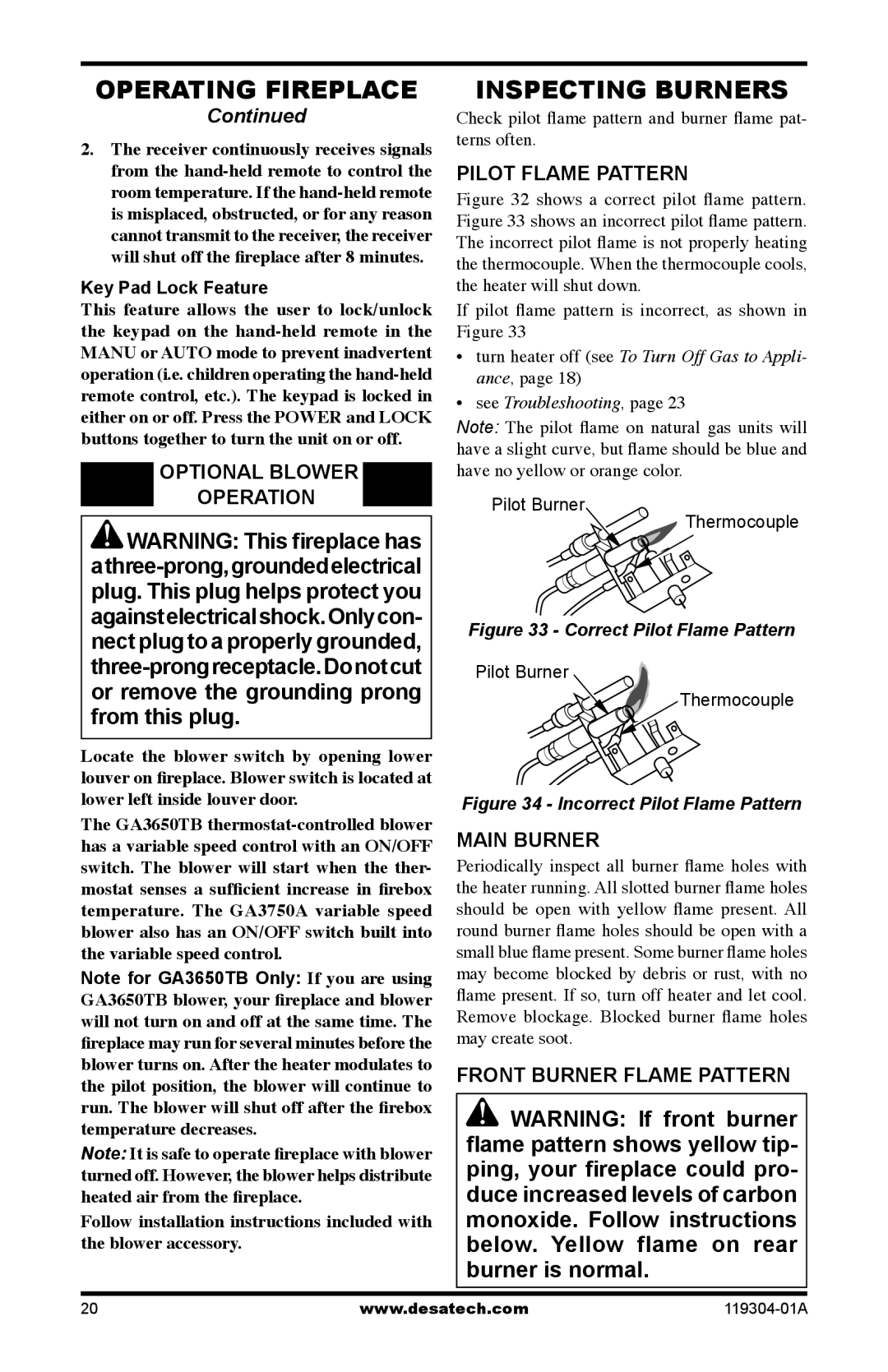
OPERATING fireplace
Continued
2.The receiver continuously receives signals from the
Key Pad Lock Feature
This feature allows the user to lock/unlock the keypad on the
OPTIONAL BLOWER
OPERATION
![]() WARNING: This fireplace has
WARNING: This fireplace has
Locate the blower switch by opening lower louver on fireplace. Blower switch is located at lower left inside louver door.
The GA3650TB
Note for GA3650TB Only: If you are using GA3650TB blower, your fireplace and blower will not turn on and off at the same time. The fireplace may run for several minutes before the blower turns on. After the heater modulates to the pilot position, the blower will continue to run. The blower will shut off after the firebox temperature decreases.
Note: It is safe to operate fireplace with blower turned off. However, the blower helps distribute heated air from the fireplace.
Follow installation instructions included with the blower accessory.
Inspecting Burners
Check pilot flame pattern and burner flame pat- terns often.
PILOT FLAME PATTERN
Figure 32 shows a correct pilot flame pattern. Figure 33 shows an incorrect pilot flame pattern. The incorrect pilot flame is not properly heating the thermocouple. When the thermocouple cools, the heater will shut down.
If pilot flame pattern is incorrect, as shown in Figure 33
•turn heater off (see To Turn Off Gas to Appli- ance, page 18)
•see Troubleshooting, page 23
Note: The pilot flame on natural gas units will have a slight curve, but flame should be blue and have no yellow or orange color.
Pilot Burner
Thermocouple
Figure 33 - Correct Pilot Flame Pattern
Pilot Burner
Thermocouple
Figure 34 - Incorrect Pilot Flame Pattern
main burner
Periodically inspect all burner flame holes with the heater running. All slotted burner flame holes should be open with yellow flame present. All round burner flame holes should be open with a small blue flame present. Some burner flame holes may become blocked by debris or rust, with no flame present. If so, turn off heater and let cool. Remove blockage. Blocked burner flame holes may create soot.
FRONT BURNER FLAME PATTERN
![]() WARNING: If front burner flame pattern shows yellow tip- ping, your fireplace could pro- duce increased levels of carbon monoxide. Follow instructions below. Yellow flame on rear burner is normal.
WARNING: If front burner flame pattern shows yellow tip- ping, your fireplace could pro- duce increased levels of carbon monoxide. Follow instructions below. Yellow flame on rear burner is normal.
20 | www.desatech.com |
